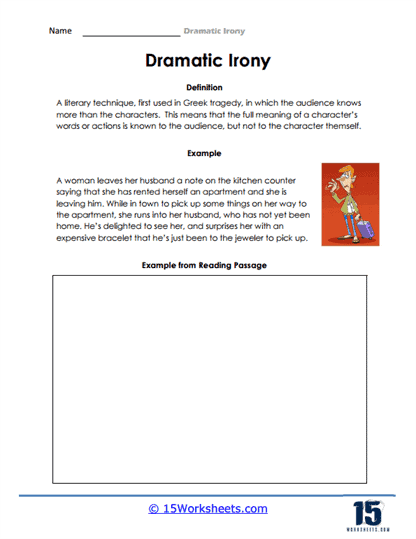Working With Examples

Worksheet Description
This worksheet explains the concept of dramatic irony and provides an example to illustrate it. The definition describes dramatic irony as a literary technique where the audience knows more than the characters. In the example provided, a woman leaves a note for her husband about renting an apartment and her plans to leave him, but the audience knows the husband is at home and about to surprise her with a bracelet. There is also a space titled “Example from Reading Passage,” suggesting that students will relate this concept to a specific text they have read.
The purpose of the worksheet is to teach students to understand and identify dramatic irony in literature. By providing a clear definition and an everyday example, it helps students grasp how dramatic irony operates within a narrative context. The worksheet prepares students to recognize this literary device in more complex reading materials. It also encourages them to think about the effect of dramatic irony on an audience’s engagement with the story and the characters’ perceptions.
A literary technique, first used in Greek tragedy, in which the audience knows more than the characters. This means that the full meaning of a character’s words or actions is known to the audience, but not to the character themself.
Find an example in this passage:
A woman leaves her husband a note on the kitchen counter saying that she has rented herself an apartment and she is leaving him. While in town to pick up some things on her way to the apartment, she runs into her husband, who has not yet been home. He’s delighted to see her, and surprises her with an expensive bracelet that he’s just been to the jeweler to pick up.
